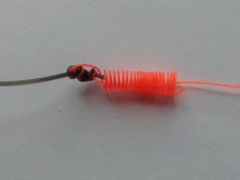Posts Tagged ‘Beadhead nymphs’
{{start}}
I am a firm believer that when fishing rivers you have to get down to where the fish are holding and also that flies particularly in faster running water should include “hot spots”. Bead head nymphs are an important part of my ‘trout’ river fly box because they help satisfy both of those criteria. I like to fish them either on the point or first dropper and find that are a great adjunct to a second weighted fly or an unweighted nymph, wee wet or spider.
WIP:
#16 / 2mm copper TBH Droz variant
#16 / 2.5 mm silver TBH Droz variant
#16 / non bead head slightly weighted Droz nymph variant
{{end}}
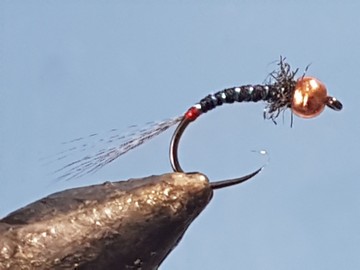
{{+1}}TBH Dross nymph variant{{-1}}
{{start}}
In 2018 I was introduced a fly called a Droz nymph that had skipped my attention even though it has been used for several seasons with great success in Tasmania, Victoria and even NSW. It's now one of the first river flies that I tie on.{{end}}
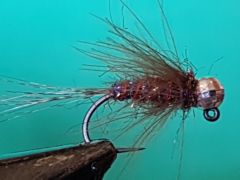
{{+1}}Duracell jig nymph{{-1}}
{{start}}
I was attracted to this fly because it is made of two of my favourite fly tying materials UV Ice dubbing and CDC. It has looked like a winner since I first saw this fly and it has not let me down. Designed by, as I understand it, Craig McDonald it is a very popular fly in Europe and fast developing a following in Australia and New Zealand.{{end}}
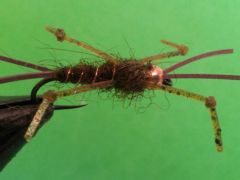
{{+1}}TBH stonefly{{-1}}
{{start}}
Stoneflies thrive in the rubble of cold well oxygenated rivers & streams. They are an available food source throughout the season and fish may feed on them to the exclusion of all other food sources particularly during hatches. The nymphs crawl along the bottom and exit the water at the stream or river edge where they hatch into stoneflies. To imitate this action the fly must be well weighted.{{end}}

{{+1}}PTN variant{{-1}}
{{start}}
This variation of Frank Sawyers pheasant Tail Nymph takes into account the shorter herl on pheasant tails that dominate the market these days and to include the substitution of peacock or coloured dubbing in the thorax and the addition of legs.{{end}}
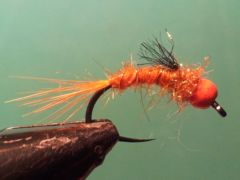
{{+1}}Carrot wet fly{{-1}}
{{start}}
This fly came about as an extension of the idea of using very popular carrot dry fly and has turned out to be a great weighted attractor fly to use on the top or middle dropper when fishing a representation fly on the point to river fish.{{end}}
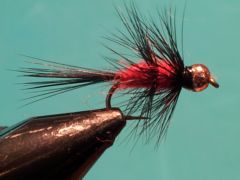
{{+1}}TBH fuzzy wuzzy{{-1}}
{{start}}
If you went back just a few years and you a asked an average fly fisher to name his for her favorite fly chances are it would be an unweighted, or lightly weighted probably with a few turns of lead wire, Fuzzy Wuzzy. The traditional Fuzzy Wuzzy has always been useful as a river and lake fly leading up to, through and just after the spawning season. This fly just extends the application of the standard Fuzzy Wuzzy an little further and the simple addition of the tungsten bead head makes it easier to get this fly down and bumping along the bottom where the fish are.{{end}}
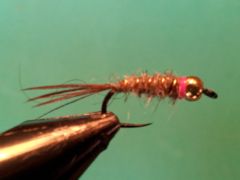
{{+1}}TBH collared hare and copper{{-1}}
{{start}}
A very effective fly yet perhaps the simplest of bead heads to tie. With elements of the hare and copper and an Adams fly in the dressing its logical that its default name became "hare and adams".{{end}}
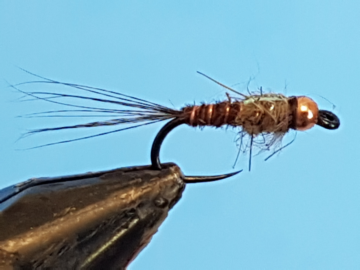
{{+1}}TBH flash back PTN{{-1}}
{{start}}
Jeremy Lucas was our river coach leading up to the 2012 World Fly Fishing Championships and was very keen on thinner flies for this early season competition. I think its a great interpretation of a classic fly and commend it for your consideration.{{end}}
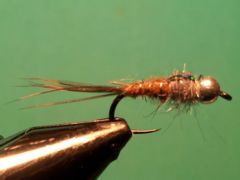
{{+1}}Marko’s go to fly{{-1}}
{{start}}
I was introduced to this fly at the 2012 World Fly Fishing Championships during the training sessions by our guide Marko Gradnik. This was his "go to" fly for all the river sectors of the competition and produced fish for all the Australian World team members.{{end}}














